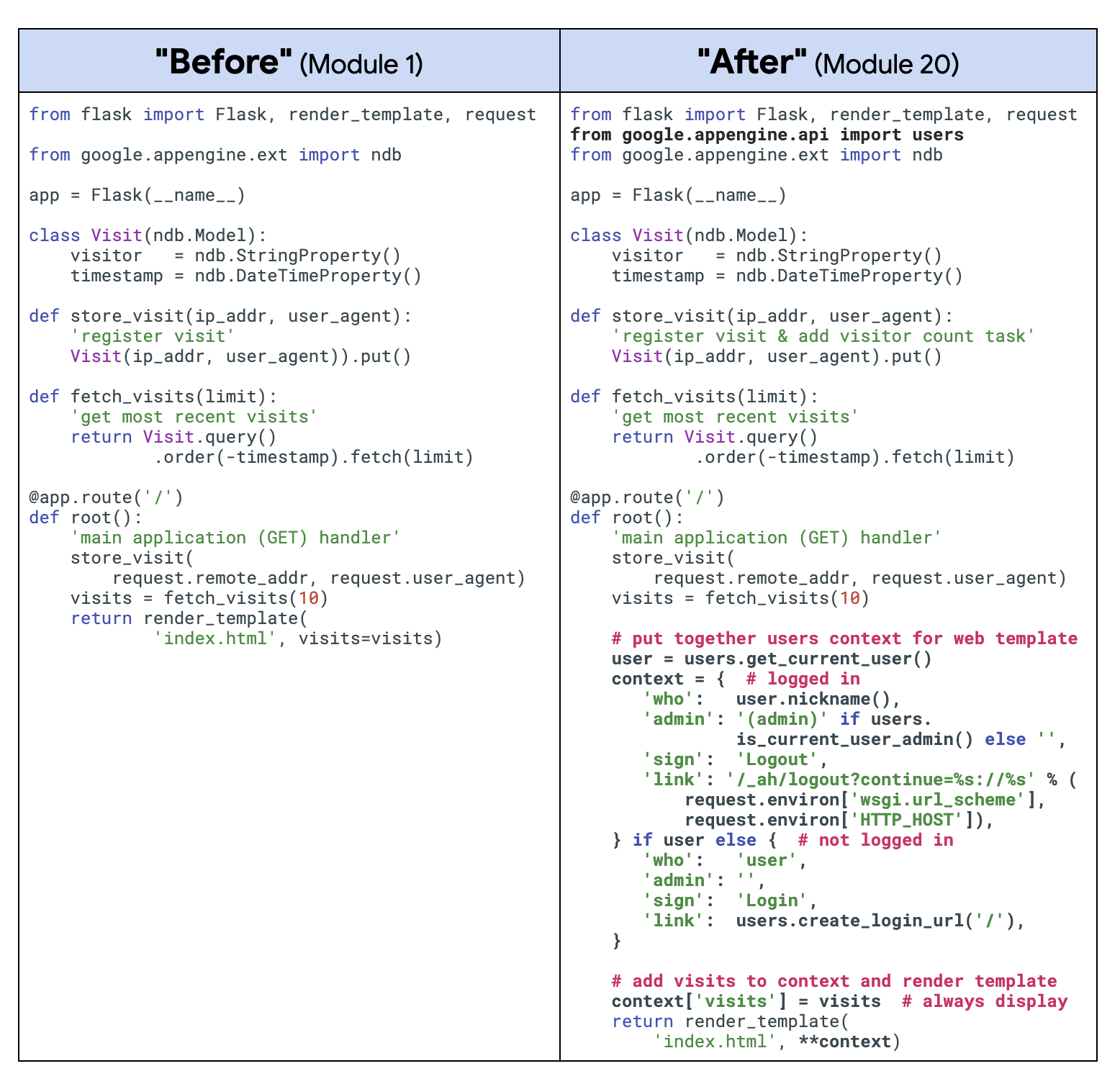How to use the App Engine Users service (Module 20)

Posted by Wesley
Chun (@wescpy),
Developer Advocate, Google Cloud

Introduction and background
The Serverless Migration
Station video series and corresponding codelabs aim to help App Engine developers
modernize their apps, whether it's upgrading language runtimes like from Python 2 to 3 and
Java 8 to 17, or to move laterally to sister serverless platforms like Cloud Functions or Cloud Run. For developers who
want more control, like being able to SSH into instances, Compute Engine VMs or
GKE, our managed
Kubernetes service, are also viable options.
In order to consider moving App Engine apps to other compute services, developers must move
their apps away from its original APIs (now referred to as legacy bundled services), either to Cloud standalone
replacement or alternative 3rd-party services. Once no longer dependent on these proprietary
services, apps become much more portable. Apps can stay on App Engine while upgrading to its
2nd-generation platform, or move to other compute platforms as listed above.
How to use the App Engine Users
service
Adding use of Users service
The sample app's basic functionality consists of registering each
page visit in Datastore and displaying the most recent visits. The Users service helps apps
support user logins, App Engine administrative ("admin'") users. It also provides convenient
functions for generating login/logout links and retrieving basic user information for
logged-in users. Below is a screenshot of the modified app which now supports user logins via
the user interface (UI):
 |
| Sample app now supports user logins and App Engine admin
users (click to
enlarge) |
Below is the pseudocode reflecting the changes made to
support user logins for the sample app, including integrating the Users service and updating
what shows up in the UI:
-
If the user is logged in, show their "nickname" (display name or email address) and display a
Logout button. If the logged-in user is an App Engine app admin, also
display an "admin" badge (between nickname and Logout
button).
- If the user is not logged in, display the
username generically as "user", remove any admin badge, and display a
Login button.
Because the Users service is primarily a user-facing
endeavor, the most significant changes take place in the UI, whereas the data model and core
functionality of registering visits remain unchanged. The new support for user management
primarily results in additional context to be rendered in the web template. New or altered
code is bolded to highlight the updates.
 |
| Adding App
Engine Users service usage to sample
app (click to
enlarge) |
Wrap-up
Today's "migration" consists of adding usage of the App Engine Users service to
support user management and recognize App Engine admin users, starting with the
Module 1 baseline app and finishing with the
Module 20 app. To get hands-on experience doing it yourself, try
the
codelab and follow along with the video. Then you'll be
ready to upgrade to Identity Platform should you choose to do so.
If you
do want to move to Identity Platform, see the Module 21 content,
including its
codelab. All
Serverless Migration Station content (codelabs, videos, and
source code [
when available]) are available at its
open
source repo. While we're initially focusing on Python users, the Cloud team is
covering other runtimes soon, so stay tuned. Also check out other videos in the broader
Serverless Expeditions
series.

